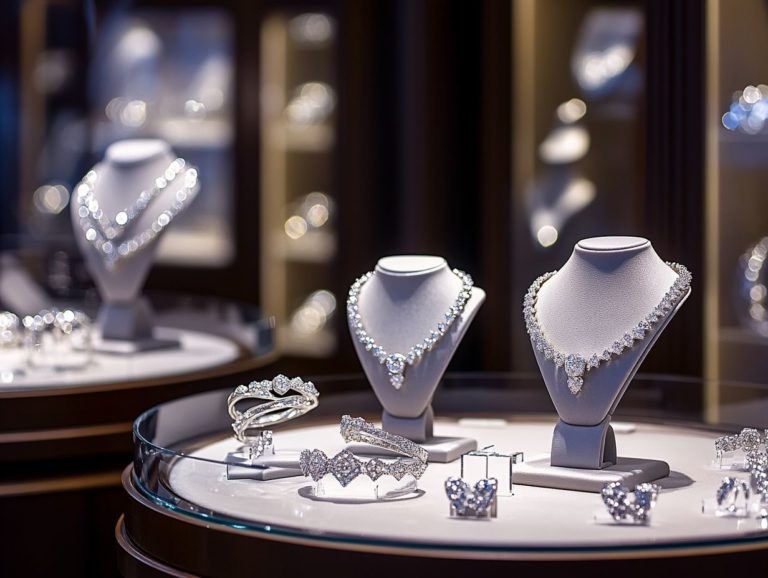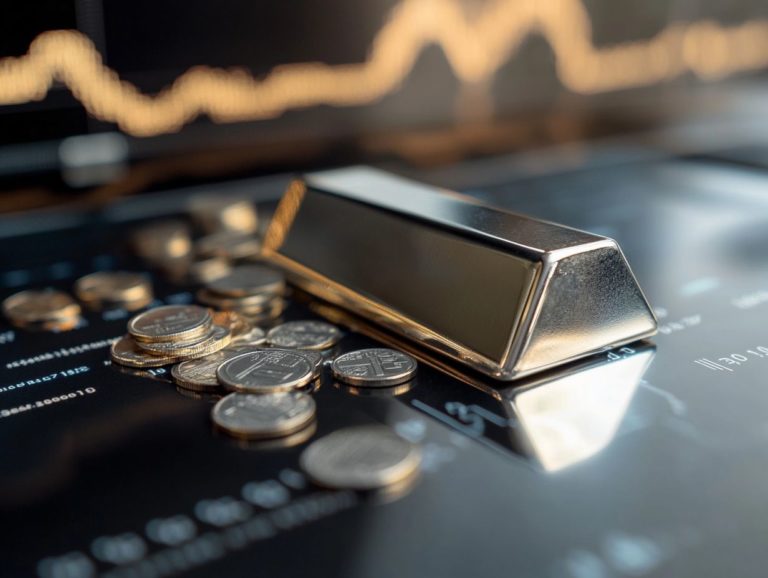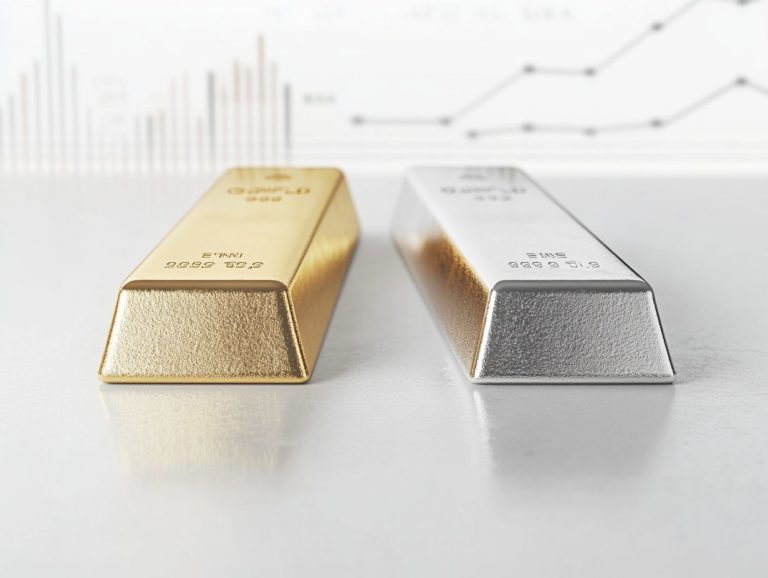The Effect of Inflation on Palladium Prices
Inflation is a pivotal economic factor that significantly influences various sectors, particularly commodities like palladium.
As prices escalate, understanding the connection between inflation and palladium prices is crucial for you as an investor or market enthusiast. This article delves into the essence of inflation and how it sways prices.
You ll also discover the factors shaping palladium prices, including supply and demand dynamics and strategies to counteract inflation’s effects. Let s dive into these key insights together!
Contents
- Key Takeaways:
- Understanding Inflation and Its Impact on Commodities
- Palladium Prices and Inflation
- Factors Influencing Palladium Prices
- The Relationship Between Inflation and Palladium Prices
- Mitigating the Effects of Inflation on Palladium Prices
- Frequently Asked Questions
- What is inflation and how does it affect palladium prices?
- Why is palladium considered a hedge against inflation?
- How has inflation historically affected palladium prices?
- What other factors besides inflation can impact palladium prices?
- Can inflation have a negative effect on palladium prices?
- How can investors use palladium to protect against inflation?
Key Takeaways:
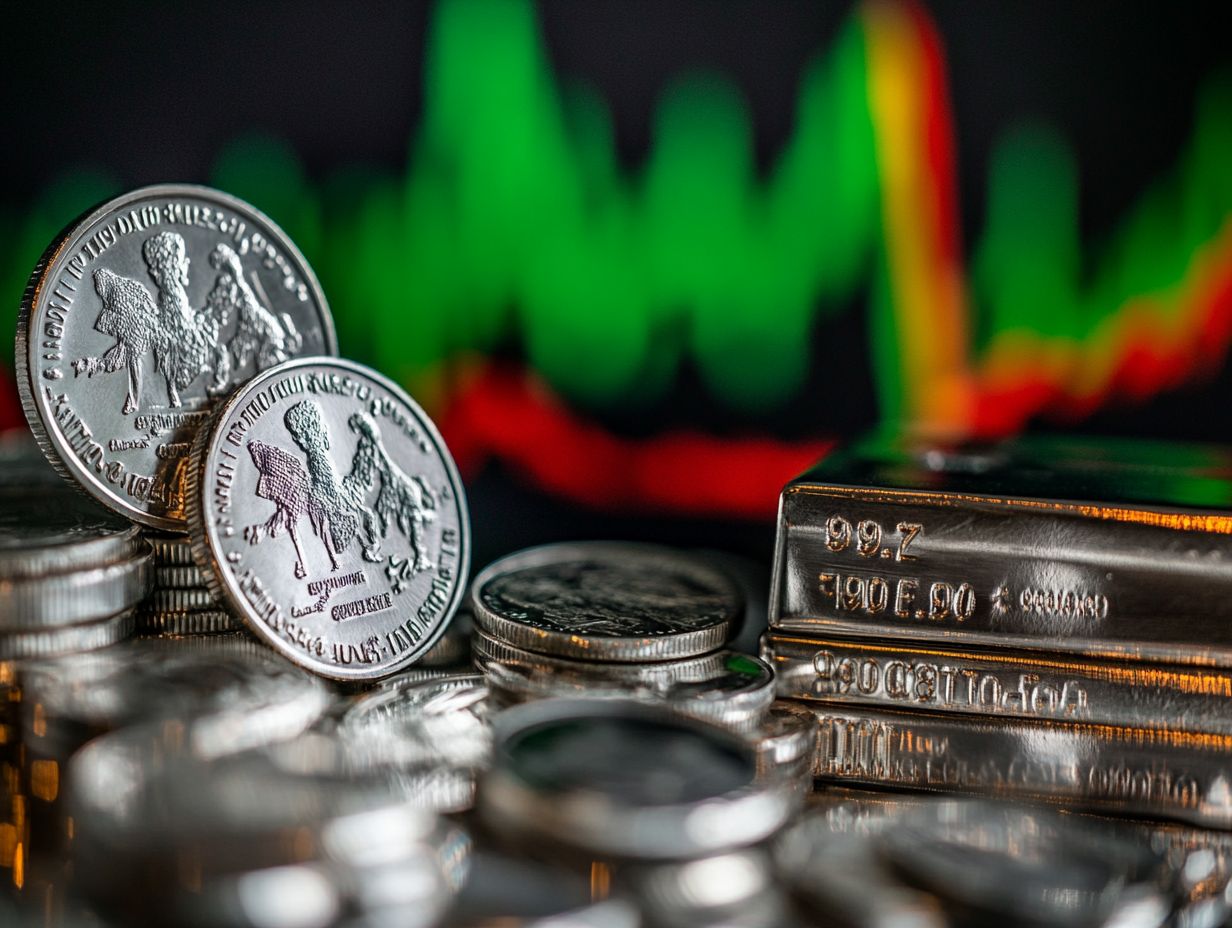
- Inflation, or the increase in overall prices, directly impacts commodities such as palladium.
- Historical trends show that palladium prices tend to rise during periods of inflation.
- Supply and demand greatly influence palladium prices during inflation.
Understanding Inflation and Its Impact on Commodities
Inflation stands as a crucial economic factor impacting the commodity market, particularly precious metals like gold and silver. These metals are often seen as safe havens during economic uncertainty.
As inflation rates rise, you ll notice a shift in consumer demand. This change affects the demand for commodities and their pricing.
Central banks, including the U.S. Federal Reserve, may alter interest rates to manage inflation. This can influence your investment preferences in commodities.
By understanding historical trends and market conditions associated with inflation, you can gain valuable insights to aid in diversifying your portfolio effectively.
What is Inflation?
Inflation is the rate at which the general level of prices for goods and services rises, leading to a decline in your purchasing power.
This phenomenon is primarily driven by two key factors: demand-pull inflation, where increased consumer demand outstrips supply, and cost-push inflation, which occurs when rising production costs compel suppliers to increase prices.
Rising prices can strain your budget and limit your choices. Investors adjust their strategies to mitigate risks associated with fluctuating values.
Therefore, inflation is not just a financial metric; it has significant implications for economic growth. It influences everything from your savings behavior to interest rates, affecting broader market dynamics and overall financial stability.
How Does Inflation Affect Prices?
Inflation directly impacts prices, causing them to rise and altering consumer demand. This shift also changes investment strategies in the commodity market.
As inflation trends upward, you may find yourself reevaluating your purchasing habits. You might gravitate more towards essential goods and step back from luxury items.
This shift creates noticeable volatility in various sectors, especially in commodities like precious metals. Many investors seek gold and silver as a safeguard against eroding purchasing power, boosting demand for these assets.
As a result, market dynamics become increasingly shaped by changes in consumer sentiment and investment behavior. It’s vital for you to keep a close eye on inflation rates to inform your strategic planning and decision-making.
Palladium Prices and Inflation
Palladium prices are heavily influenced by inflation risks. Surging inflation often heightens demand for this precious metal, especially in the automotive and consumer electronics sectors.
Palladium plays a vital role in catalytic converters and various applications. The delicate balance of supply and demand is crucial in shaping price fluctuations.
Geopolitical tensions and economic instability can hinder production. When investors look to safeguard their assets against inflation, you may notice an uptick in palladium demand, significantly influencing its market value.
Stay informed about inflation trends and their impact on your investments. Act now to protect your assets!
Historical Trends and Patterns
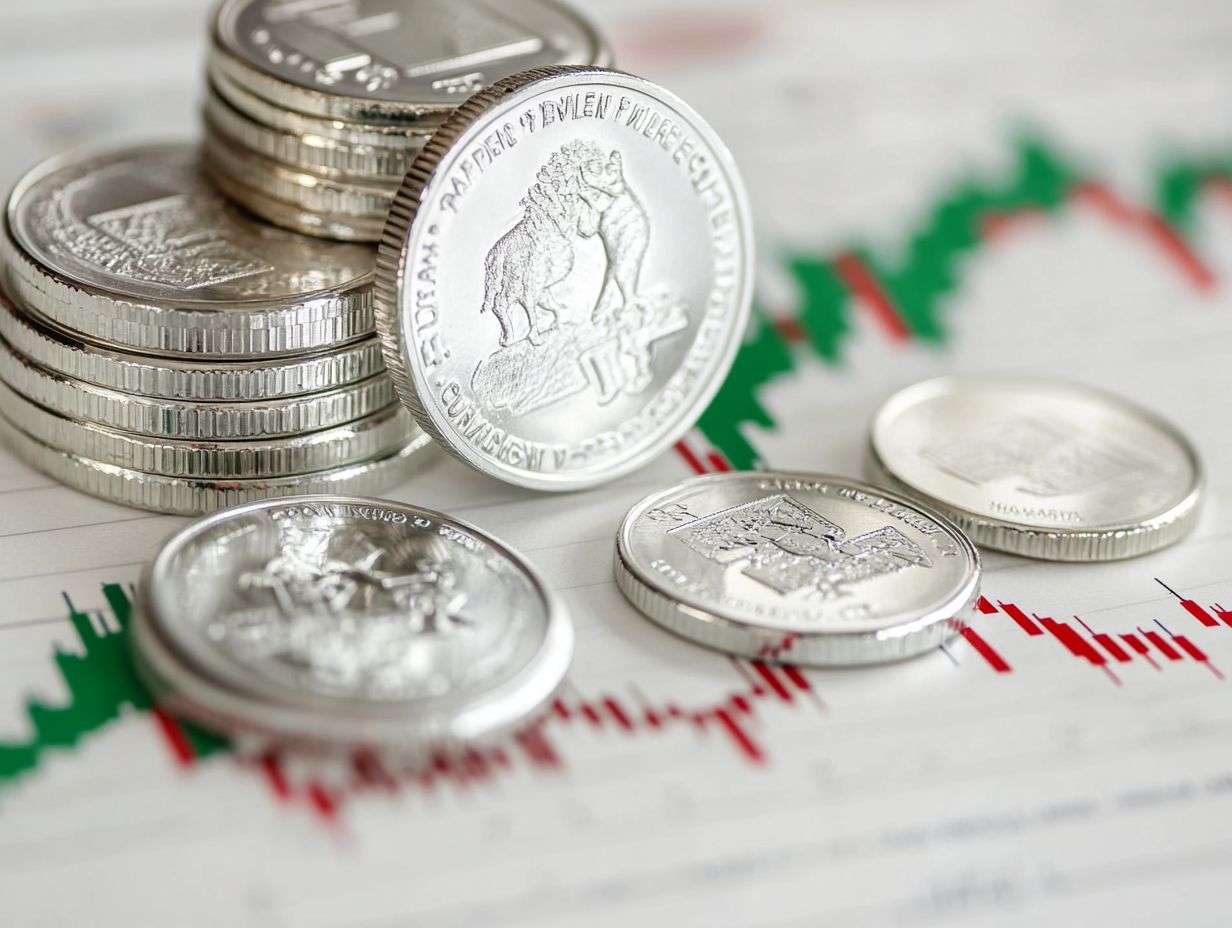
Analyzing historical trends and patterns of palladium prices reveals the complex relationship between inflation, economic conditions, and market demand.
Throughout the decades, you’ll notice that the volatile price of this precious metal has been significantly shaped by various economic events. This is especially true during periods of heightened inflation. Take, for instance, the late 1970s and early 1980s; those times witnessed big changes in palladium values, closely aligning with rising inflation rates and geopolitical tensions. Additionally, understanding the relationship between silver and gold prices can provide valuable insights into market trends.
These fluctuations often mirrored broader market trends, as industrial demand surged in the automotive sector, particularly with the introduction of stricter emission regulations (devices that reduce harmful emissions from vehicles).
By understanding how these historical economic phases have influenced palladium, you can glean insights that will aid you in forecasting future market movements.
Factors Influencing Palladium Prices
Palladium prices are shaped by a multitude of factors that warrant your attention. Key influences include the intricate dance of supply and demand, the whims of market speculation, and geopolitical tensions that may disrupt production and shift investment sentiment.
Keep an eye on these factors; they can change quickly and catch investors off guard. Understanding these elements can provide you with insights into the often unpredictable movements of palladium prices.
Supply and Demand
The principles of supply and demand are crucial in determining palladium prices, especially with industrial demand being largely driven by the automotive sector.
As manufacturers increasingly prioritize compliance with stringent emission regulations, the demand for palladium in catalytic converters has skyrocketed. Concurrently, supply constraints resulting from geopolitical tensions and limited mining capabilities have added complexity to the market landscape.
This dynamic relationship between rising industrial needs and dwindling availability means that even minor shifts in investment demand can lead to significant price fluctuations. Investors, guided by global economic forecasts and technological advancements, often react to these changes, creating volatility in the palladium market.
Therefore, grasping these factors is essential for anyone with an interest in the precious metals sector.
Market Speculation
Market speculation can greatly influence palladium prices as you, the trader, respond to perceived future shortages or shifts in investment demand.
This behavior often arises from broader economic indicators and trends, such as changes in automotive production rates or breakthroughs in electric vehicle technology, both of which can significantly impact the demand for palladium in catalytic converters. Your sentiment as an investor is crucial; when whispers of supply chain disruptions surface or geopolitical tensions flare up, the market tends to react with increased volatility. Additionally, it’s important to stay informed about silver price fluctuations, as they can also influence overall market dynamics.
Interest rates and inflation also affect how attractive palladium is compared to other commodities, often resulting in swift fluctuations in its market value as expectations continue to evolve. Additionally, understanding the impact of tax changes on silver investments can also play a crucial role in overall investment strategies.
The Relationship Between Inflation and Palladium Prices
The relationship between inflation and palladium prices is intricate, marked by both correlation and causation. When inflation rises, it tends to steer investors towards precious metals, serving as a hedge for their investment portfolios.
This dynamic interaction highlights the strategic role palladium plays in safeguarding wealth during inflationary periods.
Correlation and Causation
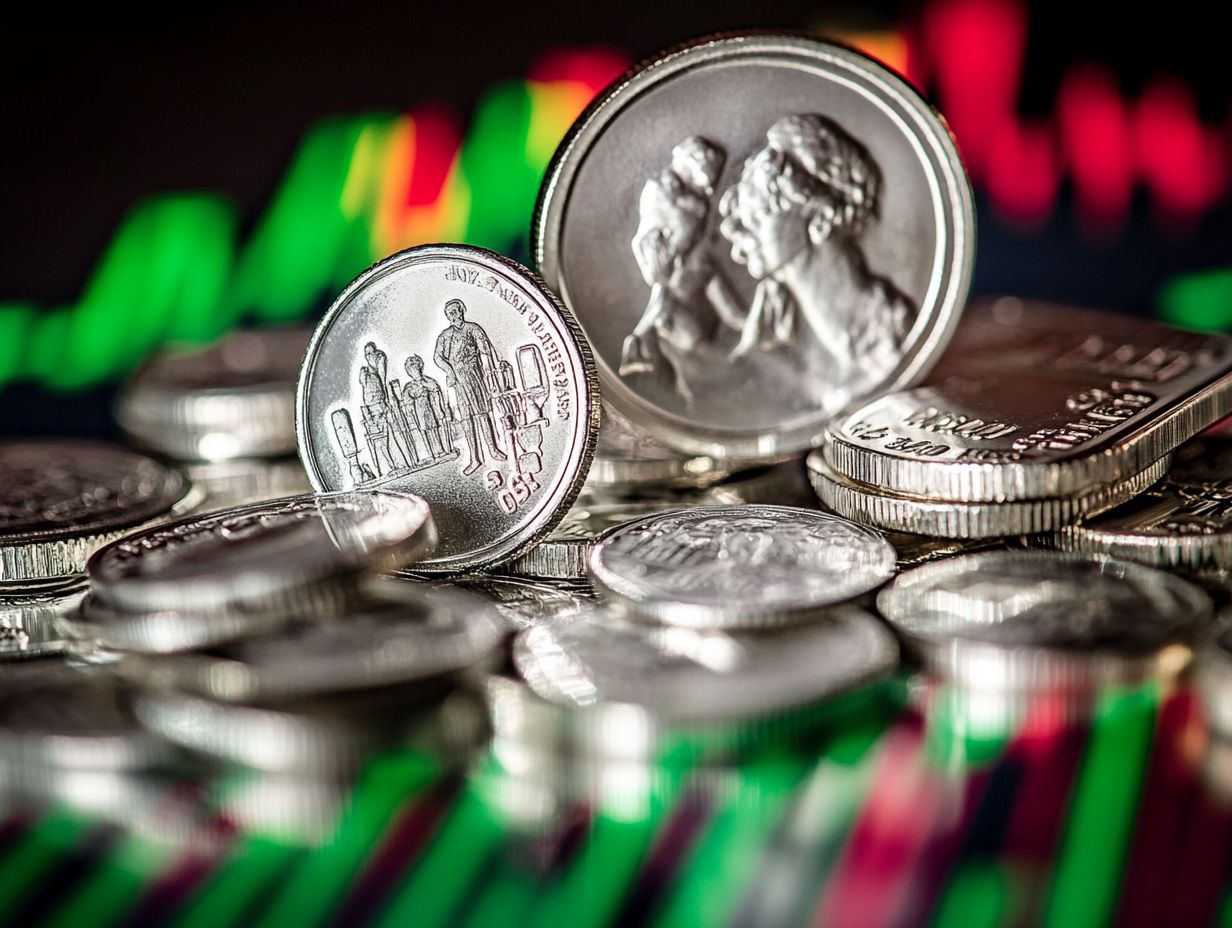
Understanding the distinction between correlation and causation is vital when diving into the relationship between inflation and palladium prices. Various external factors can sway both.
While inflation indicates a drop in purchasing power, it can drive you to invest in precious metals like palladium as a hedge. However, understanding the impact of inflation on silver prices and other significant variables is crucial. For instance, the demand for palladium in the automotive sector, driven by new technologies and stricter emissions regulations, can significantly impact prices.
As manufacturers seek palladium for catalytic converters, shifts in supply dynamics may occur. This intricate interplay shows that while rises in inflation, often spurred by economic policies or external shocks, can coincide with increased palladium prices, it’s essential to remember that this correlation doesn’t automatically mean one directly causes the other. Additionally, understanding the impact of US dollar strength on silver can also provide valuable insights into precious metals markets.
Mitigating the Effects of Inflation on Palladium Prices
To effectively mitigate the impacts of inflation on palladium prices, consider implementing strategic diversification and robust portfolio management techniques. These approaches will help minimize risk while maximizing potential returns.
Diversification and Risk Management Strategies
Effective diversification strategies and robust risk management are crucial for safeguarding your investments against the inflation-related volatility of palladium prices.
Consider adopting a multifaceted approach now to protect your assets by incorporating various asset classes like stocks, bonds, and commodities. By spreading your investments across these categories, you can potentially soften the blow of inflation.
Utilizing hedging techniques, such as purchasing inflation-linked bonds or allocating part of your portfolio to inflation-resistant assets like real estate, can further bolster the resilience of your capital.
By actively monitoring market trends and adjusting your strategy, you gain a strategic edge, enabling prompt responses to economic shifts that could impact palladium and similar assets.
Frequently Asked Questions
What is inflation and how does it affect palladium prices?
Inflation is the general increase in the prices of goods and services over time. As the value of currency decreases, it takes more money to purchase the same amount of goods. This can lead to an increase in demand for alternative assets, such as palladium, driving up its price.
Why is palladium considered a hedge against inflation?
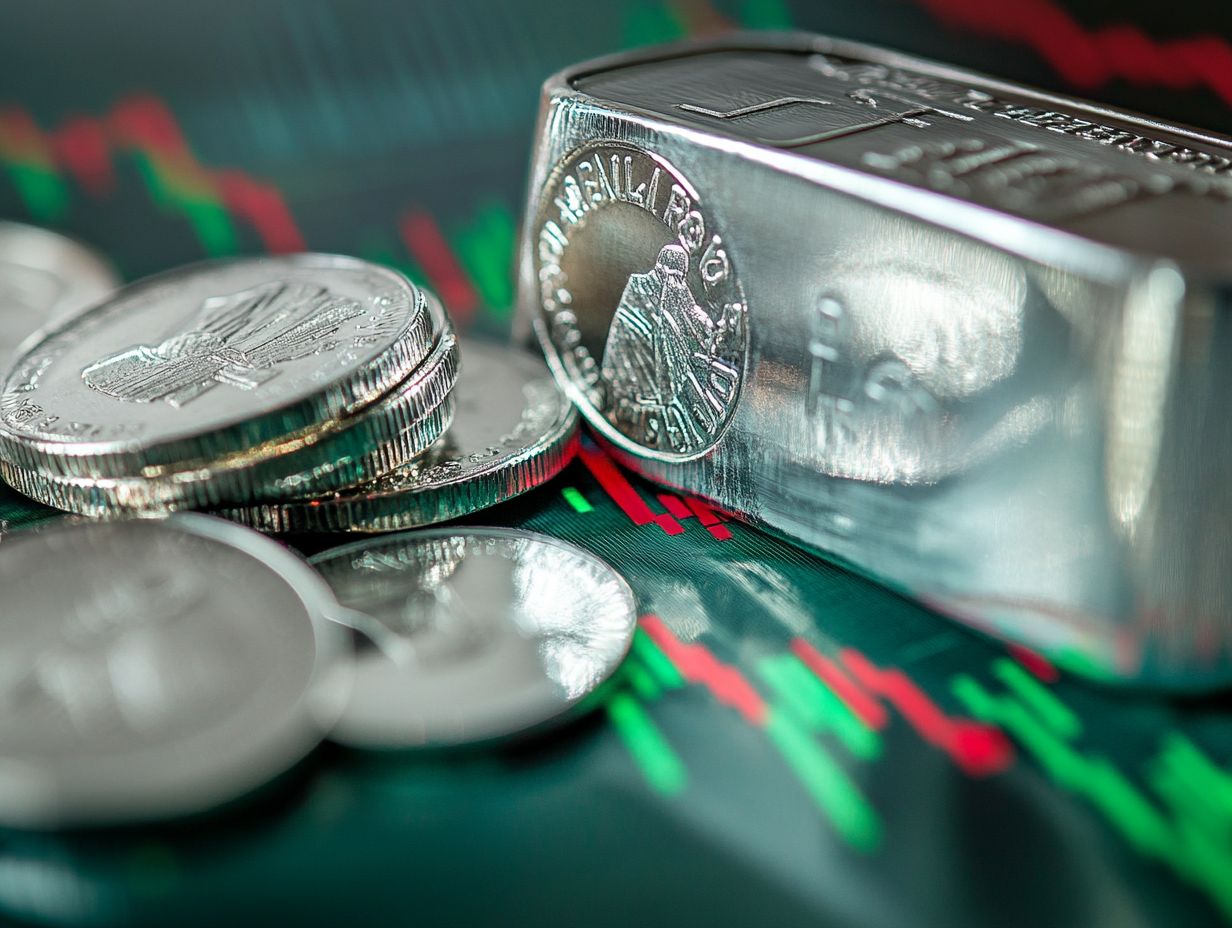
Palladium is considered a hedge against inflation because it is a tangible asset with intrinsic value. Unlike currency, it cannot be printed or manipulated by central banks, making it a more reliable store of value during times of inflation.
How has inflation historically affected palladium prices?
Historically, there has been a strong correlation between inflation and palladium prices. During periods of high inflation, palladium prices tend to rise significantly as investors seek to protect their purchasing power.
What other factors besides inflation can impact palladium prices?
Palladium prices can also be influenced by supply and demand dynamics, geopolitical events, and economic conditions in major producing and consuming countries. Changes in technology and regulations can also impact the demand for palladium.
Can inflation have a negative effect on palladium prices?
While inflation can generally drive up the price of palladium, it is not a guarantee. Other factors, such as changes in demand or production, can counteract the effects of inflation on palladium prices.
How can investors use palladium to protect against inflation?
Investors can use palladium as a hedge against inflation by adding it to their investment portfolios. By diversifying into tangible assets like palladium, investors can mitigate the effects of inflation on their overall portfolio value.
Take action now to protect your investments from inflation!











